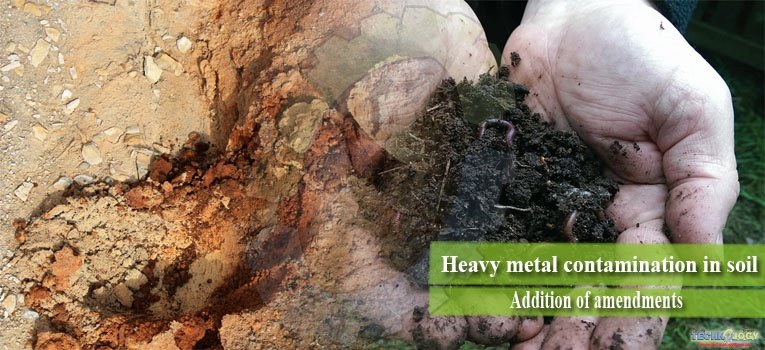Trouble of heavy metals in soil: Since the onset of the Industrial Revolution, metal refining plants using pyrometallurgical processes have generated large emissions of heavy metals such as Cd, Zn and Pb.

As the main target of such contaminants, a large number of soils are, nowadays, intensively contaminated by metals in widespread areas. As a result, degradation of the quality of the environment, human health and surface and ground water is observed in the vicinity of such polluted soils.
Immobilization with cost-effective amendments
The restoration of hazardous soils is essential, the use of most traditional remediation practices, including excavation and land-filling, is unfeasible on a large scale because these techniques are environmentally disruptive and cost prohibitive.
These concerns have prompted the emergence of cost effective and less disruptive alternatives for soil remediation. Among these technologies, in situ immobilization of metals has received a growing amount of interest and is turning out to be a promising solution for soil remediation.
This technique aims at alleviating the risk of groundwater contamination, plant uptake and exposure of other living organisms by inactivating metals using metal immobilizing amendments.
Why using amendments to soil?
The main intent of the incorporation of amendments into contaminated soils is not to alter the total metal concentration but to impair the mobility and toxicity of metals by accelerating key immobilizing processes such as (ad)sorption, precipitation, complexation and redox reactions.
An additional advantage to this technique is that some amendments are inexpensive and readily available in large quantities because they derive from bio-products or industrial by-products.
In situ metal immobilization using such materials may therefore be an enticing option to reclaim contaminated soils while effectively diverting materials from the waste stream and reusing them.
Comparative studies for remediation of contaminated soils:
Few studies have simultaneously compared the effectiveness of a large number of amendments with contrasting properties to immobilize metals. Such comparisons are almost only available in specific literature reviews.
These comparisons should therefore be interpreted with caution since the results of each separate study are dependent on several parameters such as the soil properties or the method used to assess the amendment’s ability to immobilize metals.
Cautions:
Implementing a phytostabilization strategy on contaminated soils requires a serious evaluation of the effects of amendments on the metal phytoavailability. Various metals in soils also show contrasting leachability and phytoavailability.